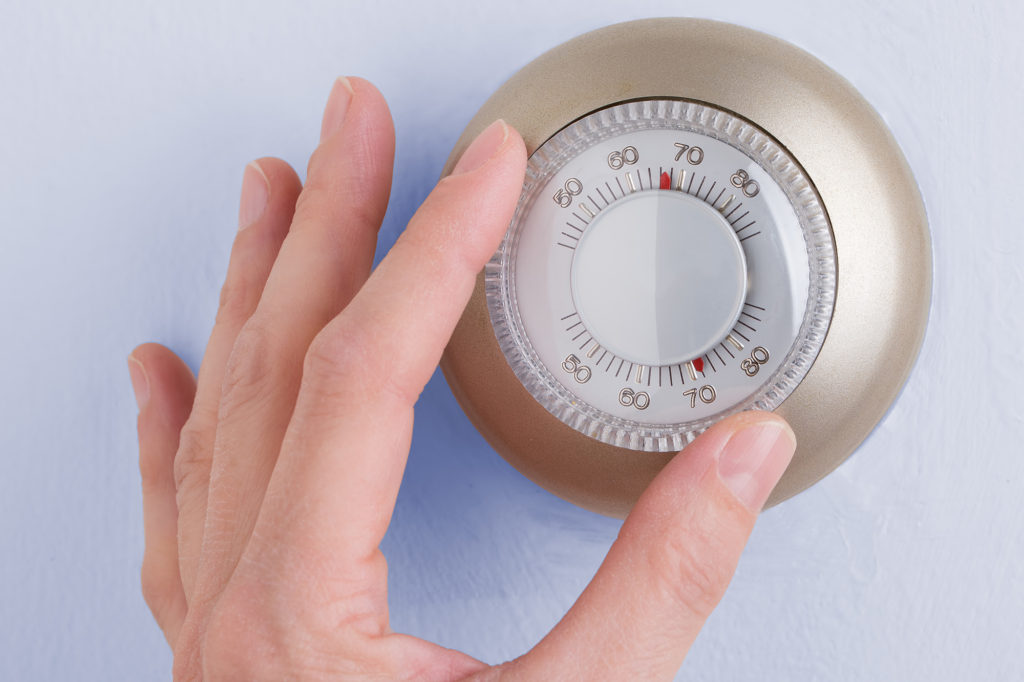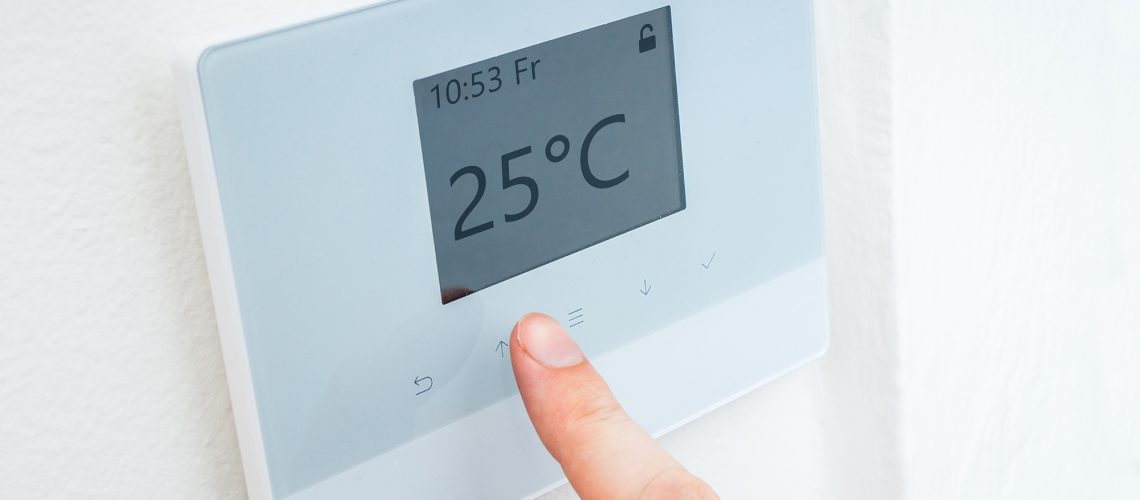We live in times where a swipe of the finger can activate your room thermostat. The days of cursing you had accidentally left the heating on for many are gone (unless you haven’t upgraded to a remote system). For the smart ones that have, you can control your heating and hot water anywhere, at any time.
Early Room Thermostat

Before the days of wireless remote heating management, central heating systems had wired room thermostats. It was important to get the location of the thermostat correct, as wires would need channelling into or passing through the wall. There were all sorts of thermostatic controls in the market, from expanding mercury to wax capsules to coiled metals. What many of us recognise from older systems is the ‘clicking’ room thermostat on the wall. Simple in design: two metal contacts click together as the warmth in the room causes them to expand. The metals would also ‘make’ or ‘break’ an electrical circuit, sending or ceasing power to a pump and boiler.
Remote Heating Room Thermostat
Today, remote systems are widely available, however, we strongly advise against fitting one yourself, unless you are a boiler or electrical professional. Thing is, there are two parts to this system that make it work: your app on your phone or tablet, and the sensor regulating the temperature in the house. The sensor has two parts to it, the transmitter which gathers the information and the receiver which sends power to the boiler on instruction from the transmitter. Most of the time you only have to worry about the app on the phone, except on installation and fault repairs. Faults should appear on your app when they occur.
So, Where Should The Room Thermostat Go?
The transmitter should be located in a permanent position for consistency of heating. But, the question is, where should it go? Should it go in the same place as older thermostats? Let’s have a quick look back at thermostats to see where they went.
The location of the room thermostat is always an opinion divider. There are some key points to consider when siting a room thermostat:
- Upstairs or downstairs?
- Is there plenty of air flow?
- Does it have to be in a room?
- What size area is the room thermostat sensing in?
- Can any other heat sources influence the thermostat?
- Is the location in direct sunlight?
- Can any thing accidently cover the room thermostat?
- Could walking past affect the room thermostat (narrow/confined space)?
- Is the wall the room stat is located north facing? (can be excessively cold and affect thermostat)?
Best Position For Room Thermostat
For a thermostat to heat the whole property sufficiently, air flow is key. This prevents it heating up too quickly and shutting down the central heating. It is good practice to ensure that the room or passageway chosen has plenty of air flowing through. High air flow keeps the room or passageway cooler; if you set the thermostat to 18˚C, all other rooms can reach a higher temperature. Thermostatic radiator valves can control the other rooms individually.
A sensible solution for a typical house is to place the thermostat on the wall in the hallway or largest room downstairs. It should be far enough away from any windows and doors to prevent sudden blasts of cold air triggering the sensor. Same applies for any heat sources. A good position would be near the end of the hallway before any internal doors or central in a house away from any heat source.

